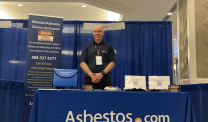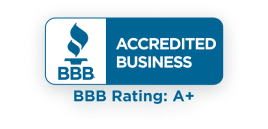Importance of Awareness & Early Detection in Mesothelioma: A Call to Action for Families and Communities
AdvocacyWritten by James Coon | Edited by Walter Pacheco

James Coon is pursuing a degree in business and human resources at Western Governors University. After graduation, he plans to apply his education and experience in the Air Force and corporate environments to build a career in human resources management. His goal is to create workplaces that prioritize employee growth, well-being and ethical leadership, while contributing to long-term organizational success. He is passionate about helping others reach their full potential and hopes to make a lasting, positive impact on employees and the communities he serves.
Growing up in the small town of Snowville, Utah, I learned early on what it meant to take care of a community. When a neighbor’s crops failed, others pitched in. When someone fell ill, we cooked meals, shared chores and made sure no one was left behind. That sense of collective responsibility has followed me through every chapter of my life, from my military service to my current educational journey. It is also why I feel strongly about raising awareness for mesothelioma, a disease that too often devastates families quietly, in part because many people don’t understand its risks or how it develops.
Mesothelioma is an aggressive cancer primarily linked to asbestos exposure. While most people may never think about asbestos, countless service members, construction workers, and even school employees have faced exposure without proper protections. In the Air Force, I experienced firsthand what it meant to work in environments that weren’t always safe. After a massive flood destroyed several facilities on base, my team and I were forced to work out of older, condemned buildings.
These spaces had not been prepared for occupancy, and we knew the risks. The insulation, crumbling walls and poor ventilation were constant reminders that we were putting ourselves in harm’s way just to keep the mission going. It was a stark lesson in how environmental hazards can be overlooked when the focus is on short-term needs rather than long-term health.
The risks didn’t stop in the workplace. When I was stationed in Korea, I lived in dorms where mold was so widespread that many of us fell ill. At the time, we didn’t think much beyond the immediate coughs, sinus infections, or headaches, but as I’ve learned more about mesothelioma and other environmental diseases, I realize now how unprepared we were to protect ourselves.
Many veterans share similar stories of exposure, whether to asbestos, mold or other toxic materials, and too often these exposures catch up with us decades later when illnesses like mesothelioma appear. What frightens me most is that the disease often doesn’t present symptoms until years after the exposure, making early detection and awareness critical.
Addressing Lack of Awareness
One of the biggest challenges in addressing mesothelioma is the lack of awareness. Many communities, especially small towns like the one where I grew up, are places where people take pride in their hard work and perseverance. But that same pride often means ignoring symptoms, putting off doctor visits or underestimating risks.
Families don’t always know that working in an old factory, serving on a military base, or even renovating a home could expose them to asbestos. Too many only discover the danger when a loved one is diagnosed, and by then, the options are limited.
Early detection and awareness can change that. If more communities understood the risks and signs, families could push for screenings, advocate for safer housing and workspaces and ultimately save lives.
Research is another critical piece of the puzzle. While mesothelioma is aggressive and often difficult to treat, promising advancements are being made. Clinical trials are testing new treatments, from immunotherapies to targeted approaches, that are giving patients and families hope where once there was none.
Survivors and caregivers have also become some of the most powerful voices in the fight against mesothelioma. Their stories remind us that even in the face of tragedy, there can be resilience and purpose. They embody the same spirit of neighborliness and community care that I experienced in Snowville — ordinary people doing extraordinary things to help one another.
Lessons in Service, Community
As I reflect on my own journey, I see how the lessons of community, resilience and service intersect with the fight against mesothelioma. My military background taught me discipline, adaptability, and the importance of watching out for my fellow service members.
Living in unsafe dorms in Korea or working from condemned buildings on base showed me how environmental hazards can be overlooked until it is too late. Those experiences opened my eyes to the fact that mesothelioma is not just a distant issue. It is something that could easily affect people I know, people I served with or even myself.
Education plays a powerful role in changing the narrative. When people know the risks of asbestos exposure, they are better equipped to protect themselves and their families. Schools, community centers and local governments can help spread information about asbestos, proper handling of old materials, and the importance of regular health screenings for those who may have been exposed.
Veterans’ organizations, in particular, can be a lifeline in this effort, as service members are disproportionately at risk. By combining education with accessible health care screenings, we can catch cases earlier and improve outcomes.
Another critical aspect is supporting caregivers. Mesothelioma doesn’t just affect the person diagnosed—it ripples through entire families. Caregivers often face emotional exhaustion, financial strain, and the heartache of watching their loved one struggle. In Snowville, I saw how community members came together to support families during tough times, but not every family has that kind of support network.
Improving Workplace Safety to Avoid Exposure
Mesothelioma also raises bigger questions about workplace safety and accountability. The fact that asbestos is still present in older buildings means that countless workers, students and families remain at risk. My own experience of working in condemned spaces underscored the reality that sometimes decisions are made for short-term convenience without considering the long-term consequences.
Employers, landlords and institutions must be held accountable for ensuring safe environments, and government regulations need to continue evolving to address these risks more aggressively. If nothing else, awareness of mesothelioma can drive communities and policymakers to take safety more seriously.
For me, pursuing a degree in Business and Human Resource Management is tied to this broader sense of responsibility. HR is not just about hiring or benefits; it is about protecting employees, ensuring fair treatment and advocating for safe workplaces. I want to use my education to create environments where people don’t have to worry about unseen dangers like asbestos exposure. By raising awareness and advocating for stronger protections, I can help ensure that what I experienced in the military doesn’t happen to others in civilian workplaces.
Ultimately, mesothelioma awareness comes down to valuing human life above convenience or cost. The disease is unforgiving, but it is also preventable in many cases. By talking about it, sharing personal stories of exposure and highlighting the latest research, we can bring this issue out of the shadows. Just as my community in Snowville always came together to care for one another, we must come together on a larger scale to care for those at risk of mesothelioma. Awareness saves lives, and silence endangers them.







